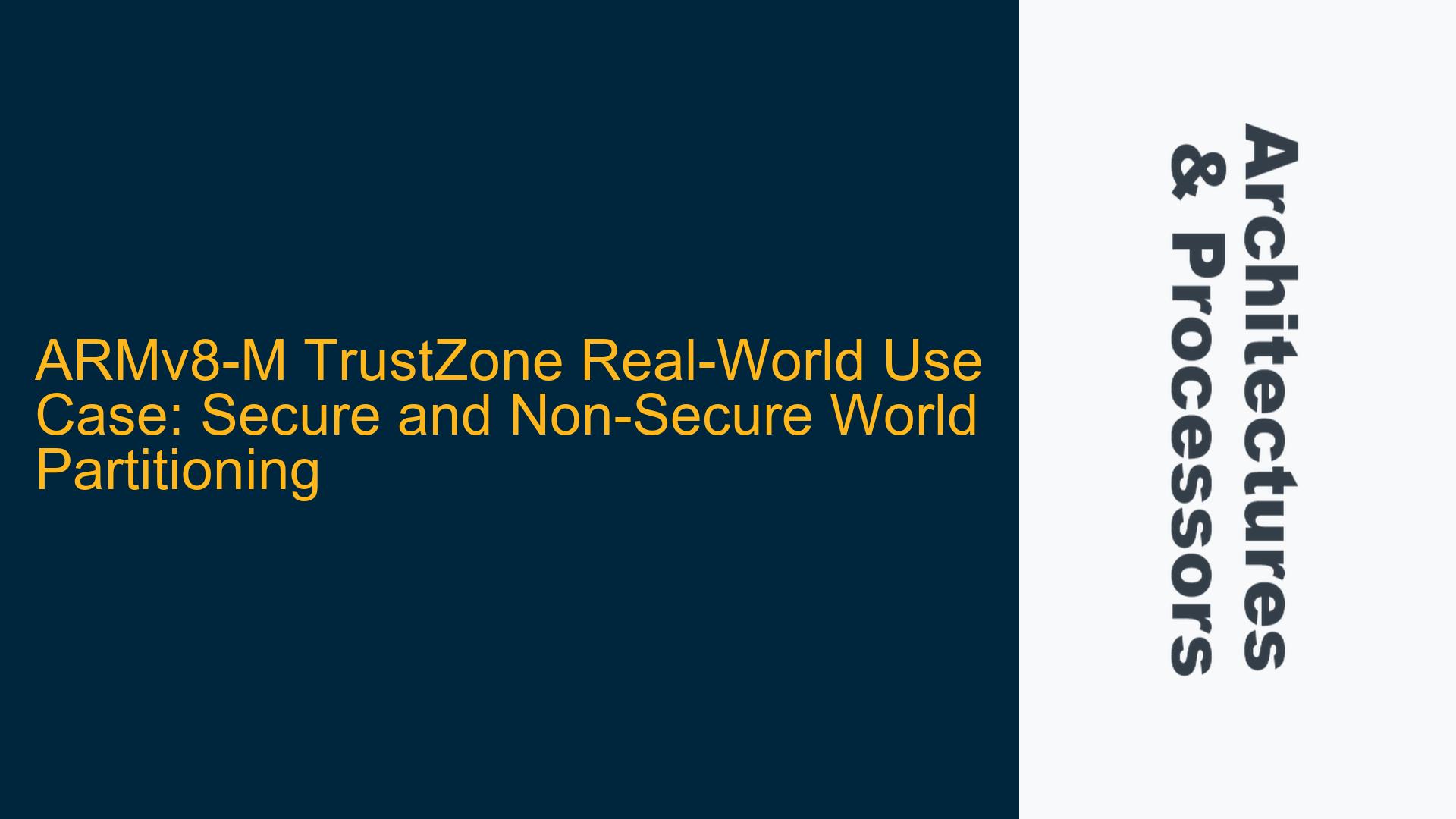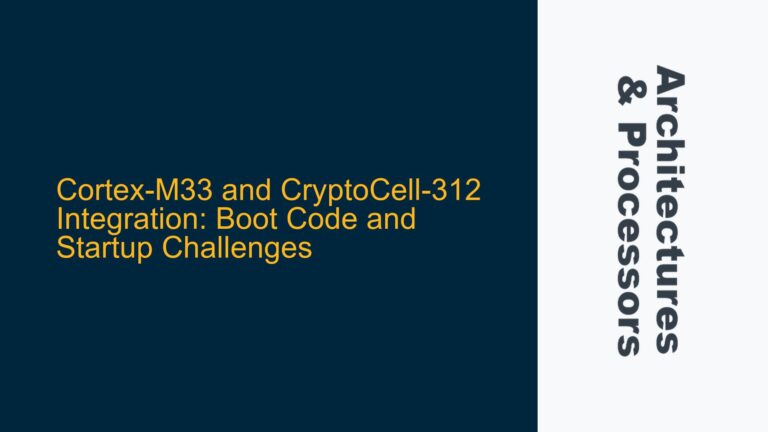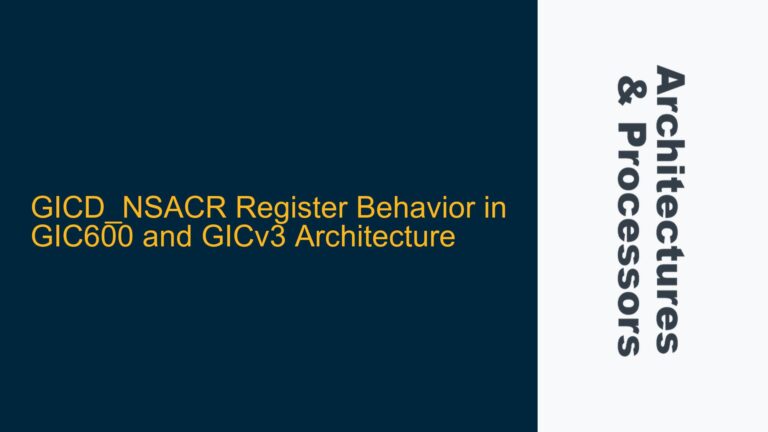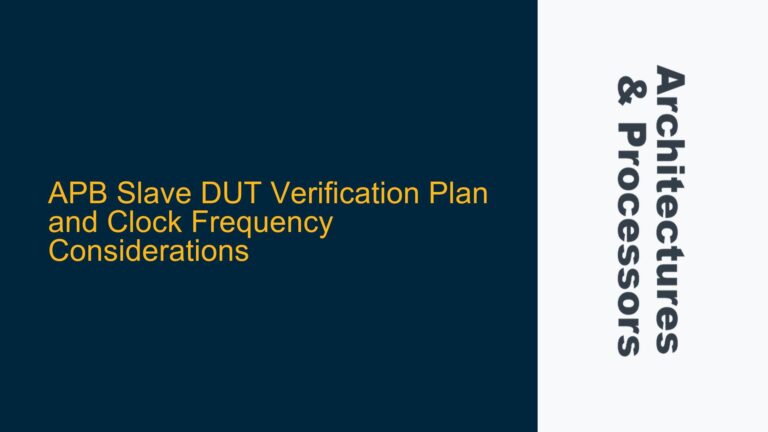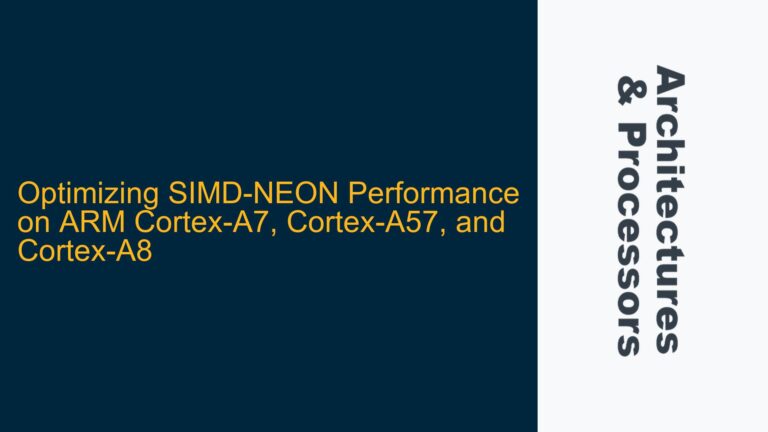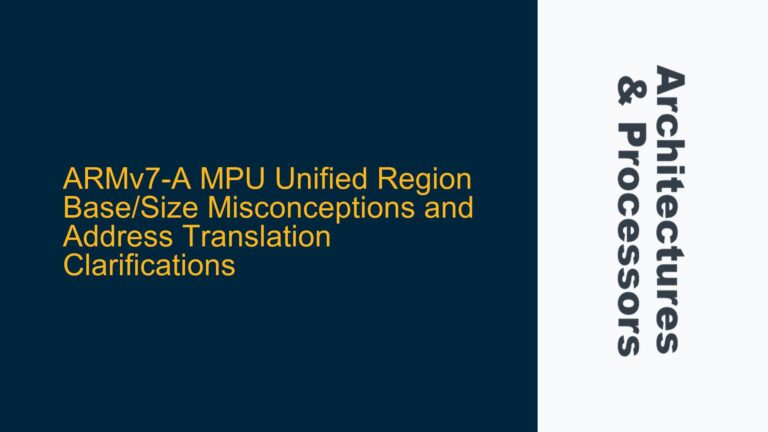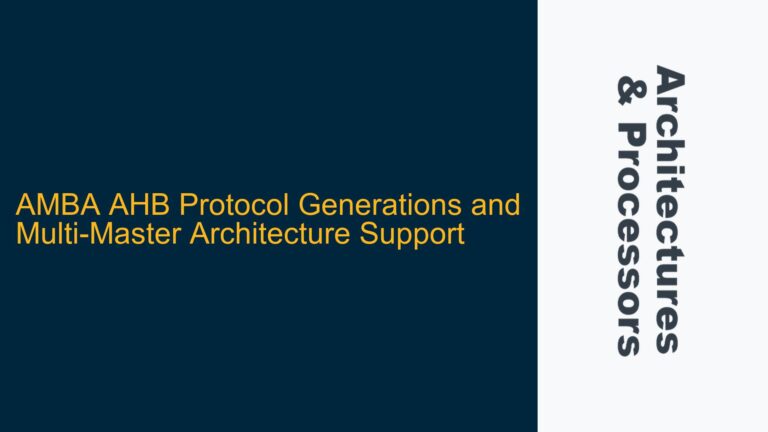ARM Cortex-M33 TrustZone Implementation Challenges in Real-World Applications
The ARM Cortex-M33 processor, featuring ARMv8-M architecture, introduces TrustZone technology to embedded systems, enabling a secure and non-secure world partitioning. This partitioning is designed to enhance system security by isolating critical code and data from less trusted software components. However, implementing TrustZone in real-world applications, such as an e-book reader with Digital Rights Management (DRM), presents several challenges. These challenges stem from the need to ensure secure execution environments, manage secure and non-secure world transitions, and handle resource sharing between the two worlds.
The primary issue revolves around the practical application of TrustZone in a device like an e-book reader, where DRM-protected content must be securely handled. The secure world is responsible for decrypting and rendering DRM-protected content, while the non-secure world handles user interface and general application logic. The complexity arises from the need to maintain strict isolation between the two worlds while allowing necessary interactions, such as passing decrypted content from the secure world to the non-secure world for display.
Memory Partitioning and Resource Sharing Between Secure and Non-Secure Worlds
One of the core challenges in implementing TrustZone on the ARM Cortex-M33 is memory partitioning and resource sharing. The secure world must have exclusive access to certain memory regions and peripherals to prevent unauthorized access from the non-secure world. However, the non-secure world also requires access to some shared resources, such as display buffers, to render content. This dual requirement necessitates careful configuration of the Memory Protection Unit (MPU) and the Attribution Unit (AU) to enforce access controls.
The MPU in the ARM Cortex-M33 allows for the definition of memory regions with specific access permissions for secure and non-secure worlds. For example, a memory region containing DRM decryption keys must be accessible only to the secure world, while a region used for storing decrypted content may need to be accessible to both worlds. Misconfiguration of the MPU can lead to security vulnerabilities, such as unauthorized access to sensitive data, or functional issues, such as the non-secure world being unable to access necessary resources.
The AU, on the other hand, is responsible for managing access to peripherals. In an e-book reader, peripherals such as the display controller and touchscreen interface must be accessible to both worlds, but with different levels of privilege. The secure world may need exclusive access to certain peripherals, such as a cryptographic accelerator, while the non-secure world handles user input and display output. Proper configuration of the AU is critical to ensure that peripherals are accessible to the appropriate world without compromising security.
Secure and Non-Secure World Transition Overhead and Performance Impact
Another significant challenge in implementing TrustZone on the ARM Cortex-M33 is the overhead associated with transitions between the secure and non-secure worlds. Each transition involves saving and restoring the processor state, which can introduce latency and impact system performance. In an e-book reader application, frequent transitions between the secure world (for DRM decryption) and the non-secure world (for user interface updates) can lead to noticeable delays and degrade the user experience.
The ARMv8-M architecture provides mechanisms to minimize transition overhead, such as the Secure Gateway (SG) instruction and the Non-Secure Callable (NSC) memory regions. The SG instruction allows the non-secure world to call into the secure world in a controlled manner, while NSC regions define memory areas in the secure world that can be accessed by the non-secure world. However, improper use of these mechanisms can lead to security vulnerabilities, such as unauthorized entry into the secure world or exposure of secure world code to the non-secure world.
To mitigate transition overhead, developers must carefully design the software architecture to minimize the number of transitions and optimize the code executed during transitions. For example, batching multiple DRM decryption operations in a single secure world entry can reduce the frequency of transitions and improve overall system performance. Additionally, leveraging hardware features such as the Cortex-M33’s low-latency interrupt handling can help reduce the impact of transitions on real-time tasks.
Implementing Data Synchronization and Secure Communication Channels
In an e-book reader with DRM, secure communication between the secure and non-secure worlds is essential to ensure the integrity and confidentiality of DRM-protected content. The ARM Cortex-M33 TrustZone implementation must provide mechanisms for secure data exchange, such as shared memory regions with controlled access or secure messaging channels. However, implementing these mechanisms requires careful consideration of potential security risks, such as buffer overflows or data leakage.
Shared memory regions can be used to pass decrypted content from the secure world to the non-secure world for display. However, these regions must be carefully managed to prevent unauthorized access or modification. The MPU can be configured to enforce access controls, but developers must also implement software checks to validate data integrity and prevent buffer overflows. For example, the secure world can write a checksum or digital signature to the shared memory region, which the non-secure world can verify before processing the data.
Secure messaging channels, such as those implemented using the ARMv8-M Secure Monitor Call (SMC) instruction, provide an alternative mechanism for secure communication. These channels allow the non-secure world to send requests to the secure world, which can then process the requests and return results. However, secure messaging channels must be designed to handle potential attacks, such as replay attacks or denial-of-service attacks. For example, the secure world can implement rate limiting or request authentication to prevent abuse of the messaging channel.
Debugging and Testing TrustZone Implementations
Debugging and testing TrustZone implementations on the ARM Cortex-M33 presents unique challenges due to the isolation between the secure and non-secure worlds. Traditional debugging tools and techniques may not be directly applicable, as they may not have access to the secure world or may inadvertently expose sensitive information. Developers must use specialized tools and techniques to debug and test TrustZone implementations while maintaining security.
ARM provides tools such as the ARM Development Studio and the ARM TrustZone Debugger, which allow developers to debug both the secure and non-secure worlds while maintaining isolation. These tools provide features such as secure world breakpoints, secure memory access, and secure trace capture, enabling developers to identify and resolve issues without compromising security. Additionally, developers can use hardware-based debugging techniques, such as using the Cortex-M33’s Embedded Trace Macrocell (ETM) to capture trace data without interrupting the secure world.
Testing TrustZone implementations requires a combination of unit testing, integration testing, and security testing. Unit testing can be performed on individual components in the secure and non-secure worlds, while integration testing verifies the interaction between the two worlds. Security testing, such as penetration testing or fuzz testing, is essential to identify potential vulnerabilities and ensure that the implementation meets security requirements. For example, security testing can simulate attacks such as unauthorized access to secure memory or attempts to bypass secure world entry points.
Best Practices for ARM Cortex-M33 TrustZone Implementation
Implementing TrustZone on the ARM Cortex-M33 requires adherence to best practices to ensure security, performance, and maintainability. These best practices include careful design of the software architecture, proper configuration of hardware features, and thorough testing and validation.
The software architecture should be designed to minimize the attack surface and reduce the complexity of secure and non-secure world interactions. For example, the secure world should expose only the necessary interfaces to the non-secure world, and these interfaces should be designed to prevent misuse. Additionally, the software architecture should be modular, with clear separation between secure and non-secure components, to facilitate testing and maintenance.
Hardware features such as the MPU, AU, and ETM should be configured to enforce security policies and optimize performance. For example, the MPU should be configured to define strict memory access controls, while the AU should be configured to manage peripheral access based on the security requirements of each world. The ETM can be used to capture trace data for debugging and performance analysis, but care must be taken to ensure that sensitive information is not exposed.
Thorough testing and validation are essential to ensure that the TrustZone implementation meets security and functional requirements. This includes unit testing, integration testing, and security testing, as well as performance testing to ensure that the system meets real-time requirements. Additionally, developers should consider using formal verification techniques to prove the correctness of critical security components.
Conclusion
Implementing TrustZone on the ARM Cortex-M33 in real-world applications, such as an e-book reader with DRM, presents several challenges related to memory partitioning, resource sharing, transition overhead, secure communication, and debugging. Addressing these challenges requires careful design, proper configuration of hardware features, and thorough testing and validation. By following best practices and leveraging the capabilities of the ARMv8-M architecture, developers can create secure and efficient TrustZone implementations that meet the demands of modern embedded systems.
